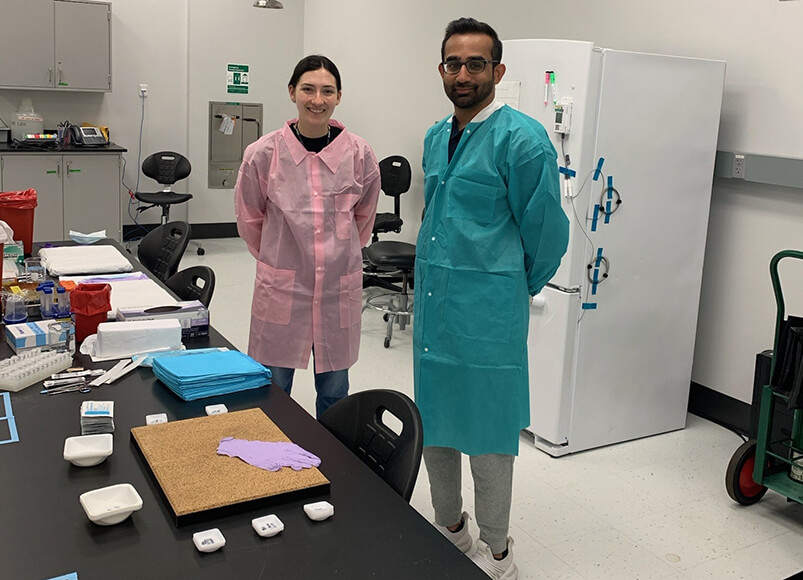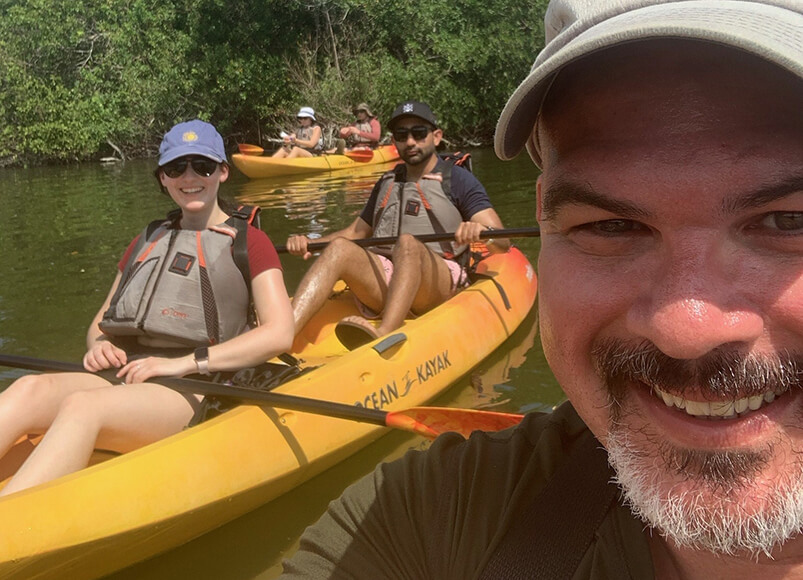What can happen to the human body in space? Even the healthiest of astronauts may experience bone loss, muscle atrophy, an enlarged heart, vision problems and other complications. Measures to prevent these problems are taken in the form of effective exercise, but the mechanisms of such bodily changes are not well known, making them difficult to fully avert.
Researchers – including Jeffrey Willey, PhD, the Milton Raben Associate Professor of Radiation Oncology – are utilizing new tactics, approaches and exploration quests to keep astronauts safe and healthy throughout their missions. Willey leads the Jeffrey Willey Lab at Wake Forest University School of Medicine and has been involved in five space missions that have studied the physiological effects of deep space flights on astronauts.

|
“This study is important because, for the first time in a spaceflight study, we’ll get an understanding of how the lower gravitational environment of a Martian environment could impact astronaut health and performance,” - Jeff Willey, PhD, Milton Raben Associate Professor of Radiation Oncology |
Willey and his team, which includes two Wake Forest University Graduate School of Arts & Sciences doctoral students, Chirayu Patel and Kaitlyn Reno, and a Wake Forest University undergraduate student, Ethan Payne, are working with NASA to identify how varying gravitational levels in space may contribute to the damaging effects of spaceflight. For their research, they were recently involved in a NASA mission, termed the Joint Partial-Gravity Rodent Research Mouse Habitat Unit-8 (MHU-8), which is a collaboration between NASA, the Japan Aerospace Exploration Agency (JAXA), Harvard Medical School, Northwestern University, Loma Linda University, the University of California-Davis and the University of Tsukuba.
The MHU-8 mission launched aboard SpaceX’s most recent mission to the International Space Station and is the first collaborative rodent mission between NASA and JAXA to test how different gravitational levels can impact health. Mice were launched within JAXA's transportation cage units to the space station aboard the SpaceX Dragon spacecraft. After docking, astronauts transferred the mice to JAXA's Mouse Habitat Unit in the module.
For the duration of the experiment, the mice were housed in centrifuges contained within the JAXA Multiple Artificial-gravity Research System facility, also in the module. The centrifuges exposed the mice to different levels of gravity; specifically, the gravitational environments similar to that of Mars, Earth, an intermediate level and zero gravity of space. The mice returned safely to earth and flight results are being compared with ground studies.


















